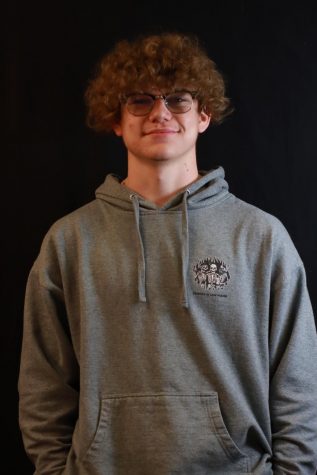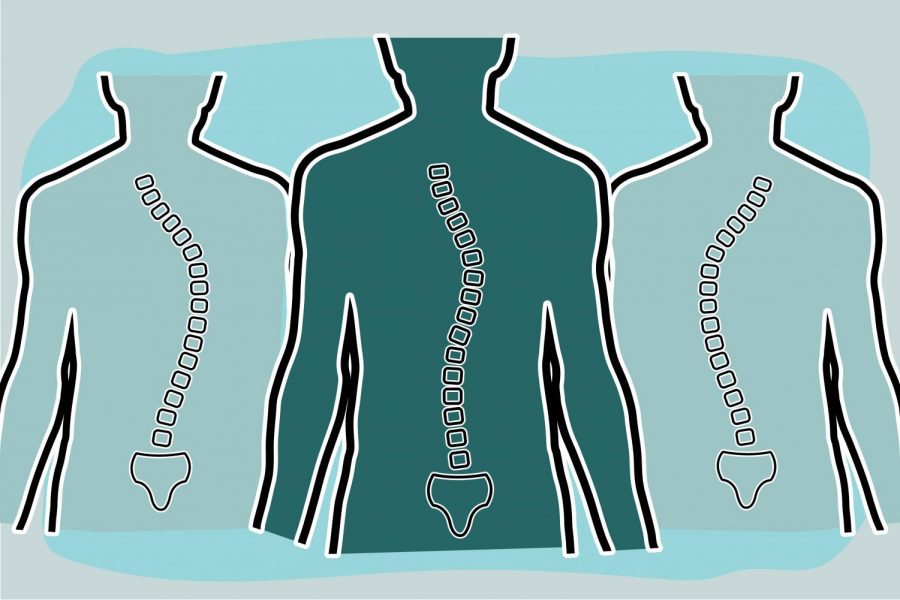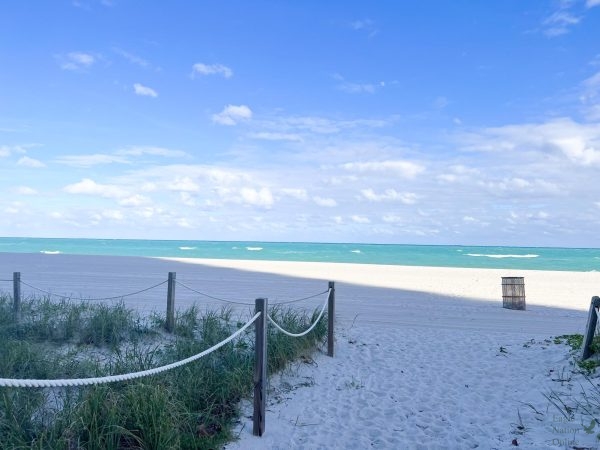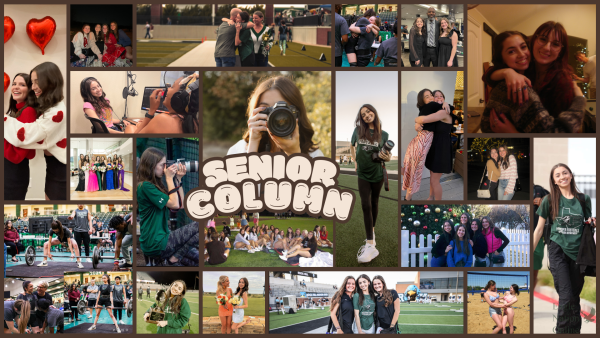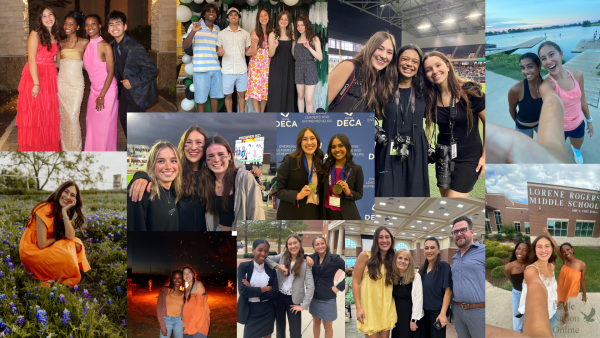Look back at it: journalist reflects on scoliosis experience
In an image created by graphic designer Mark Chrissan, three curved spines display the different shapes of scoliosis. The condition refers to when the spine curves in the form of a ‘S’ or ‘C’ shape. “My curve could be worse,” said columnist Emma Hutchinson. “It was borderline concerning, but I wasn’t obligated to receive the surgery to fix my spine.”
The silence of the doctor’s office radiated against the storm of emotions clouding my mind. I sat there in confusion, looking around as I waited for the X-ray results alongside my parents. I glanced at a poster on the wall in front of me. It had a diagram of the spine, yet the back was shaped like an “S.” All I could do was wonder how a spine could look like that, and my gut feeling told me that I was about to find out.
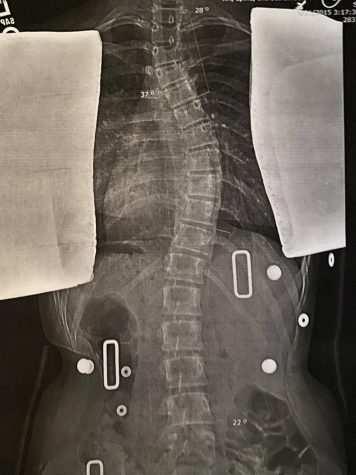
Scoliosis, he said. I had scoliosis.
For three years I went about my day with a piece of plastic and padding hugging my waist and digging into my ribs. I hid it pretty well under my clothes, beside the piece placed above my left hip that could be seen whenever I wore jeans and shorts. I could only take it off to shower or swim, but I knew that the more consistently I wore it, the less time I’d have to spend with it.
I coasted through each school year like any other kid, except I had to be cautious not to bump into anyone or anything, just to make sure no one would hear the rustle of the velcro straps on my back or feel the plastic shield around my torso. Eventually, I told my close friends, and they would make light-hearted jokes, calling my brace my “abs of steel,” to make me feel at ease about the whole thing.
My curve could be worse. It was borderline concerning, but I wasn’t obligated to have surgery to fix my spine. I couldn’t bear the thought of getting an incision down my back, since the road to recovery was long, boring, and painful. But after a while, reality sank in, and all I wanted was to be symmetrical and straight-spined like the rest of my peers.
As a high schooler, I never thought that my biggest insecurity to date would be something under my skin. It seemed stupid that the one thing I was the most insecure about wasn’t even really visible to others.

As a high schooler, I never thought that my biggest insecurity to date would be something under my skin. It seemed stupid that the one thing I was the most insecure about wasn’t even really visible to others.
— Emma Hutchinson
During the spring of my freshman year, I visited my doctor for my semi-annual check up. Every visit leading up to this one, they would say the same thing. “You’re still growing, and we can’t take the risk of it getting worse, so six more months with the back brace it is.” I felt that I would never hear anything different – until the day finally came. My doctor said I didn’t need to wear the brace anymore. I almost didn’t believe him. Somewhere in the distance, I heard freedom bells ringing.
After that, life felt normal, and I got to experience so many new activities. The doctor said I would return each year to see how my healing was progressing and to eventually determine if I needed the surgery to get rid of my scoliosis once and for all. In the meantime, I was enjoying actually being able to wear clothes that weren’t a baggy t-shirt and Nike shorts. I was so much more confident and happy with myself, but here and there, I would look in the mirror and observe my uneven shoulder blades with disgust. Surgery is still an option, and it feels pretty much inevitable.
A year later, I returned for my post-freedom-from-the-brace check up, and the X-rays spoke for themselves – my curve had increased by about one degree. The doctor said if I don’t get the surgery, the curve could increase by another degree every year.
So what’s in store for the future? It’s undetermined exactly when I’m going to get surgery, but it will most likely be the summer after I complete my freshman year of college. Post-surgery, I can return to school four to six weeks later and then be fully recovered in three to six months. The journey has been long and unforgiving, but I know the destination is going to be worth it.
Today, I can safely say that despite the underlying curve coursing down my back, I’ve been more confident and happy in my body than I’ve ever been. I can still do the things I love, such as color guard, going to the gym, swimming, wearing whatever I want and just continuing to live like a normal teenager. While the back brace couldn’t completely get rid of the need for surgery, I truly think this process has taught me how to persevere through the adversities that life randomly throws my way, and it has reminded me that I’m always going to be strong enough to match my insecurities with rays of hope.
Your donation will support the student journalists of Prosper High School. Your contribution will allow us to purchase equipment and cover our annual website hosting costs.

